This Iowa candy has driven fans into hysterics for a century. Is it ready to go national?
SIOUX CITY — Brenda Peters’ job title is shipping manager, but, really, she’s the keeper of memories.
Her face lit by the blue screen of the backroom computer in Palmer’s Olde Tyme Candy Shoppe, the ambrosial smell of fudge and chocolate and childhood dreams wafting through her office, she sorts emails from gourmets across the country. All races, all social statuses, all religions, their stories coalesce with a deep love for — and, in Peters’ case, a desperate need to be shipped — one elusive delicacy: A Twin Bing.
In their pleas she reads yarns about family traditions: Bings tucked in Christmas stockings, Bings mailed in college care packages, Bings served at block parties, Bings as a special summer treat after swimming lessons, Bings headed to military bases overseas, an oh-so-sweet reminder of home. Tales of Bings needed to mark special occasions are a near-daily occurrence: weddings, baby showers, graduations, you name it.
In fact, just the other day a woman called to have 95 Bings sent for her grandma’s surprise 95th birthday.
“The granddaughter said Bings were something she loved as a kid back when she lived here, before she moved to Arkansas, I think it was,” Peters says. “You hear stuff like that a lot.”
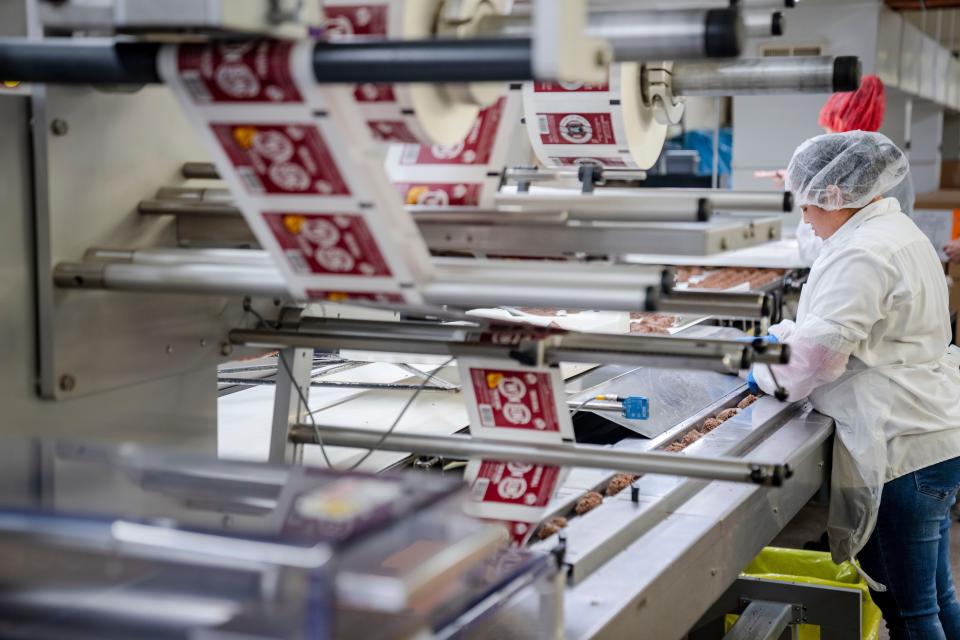
Oh, funerals, too. She hears tales about a Bing always being right next to grandpa’s TV chair, or the after-chemo Bing that kept a daughter going through a difficult diagnosis or the way grandma remembered Bings even when nearly everything else had faded — like those red-and-white wrappers were the Rosebud sled of her life. Sometimes the writer wants to serve Bings at the service; other times they just need a handful to leave on the headstone.
Stick with me here because Bing fandom stories just keep coming, and they get even crazier.
Once Marty Palmer — Palmer Candy’s fifth-generation president and co-owner — got a call from a woman working at O’Hare airport. Overnighting Bings would take too long because her boyfriend’s birthday was that evening. But if Marty could drive to the Sioux City airport and hand a box to a specific flight attendant, she’d get them to Chicago before the party. (He did, and the Bings were a hit.)
No question Bings have been to all 50 states, Marty says, and he’s nearly positive there’s been a Bing on every continent. The company ticked off Antarctica a few years ago when an Iowa scientist stationed there needed his fix. Marty was instructed to mail Bings to San Francisco, where they’d meet a freighter that would carry them south along with essentials. (He’d argue that candy — Bings especially — is always essential.)
If you’re a fan of the Minnesota Twins? The season ain’t the same without Twin Bing. If you have twins? Cigars are passé; it’s Twin Bing to celebrate. Heavens, there was the bachelor party that stopped by for Bings this summer, Peters says with epiphany. And a girl who shot Bing-themed senior photos at the store this fall.
Digitally inclined fanatics have even created a user-generated Google Map plotting where Bings are for sale. Generally, Palmer’s region is the western Plains, but epicurean crowdsourcing has found Bings as far away as the Holiday gas station in Fairbanks, Alaska.
For Peters, the emails don’t stop: How do I get them? Where can I get them? Please, can you get me some Bings!?
So what, exactly, is this confection throwing people into such hysterics? And why?
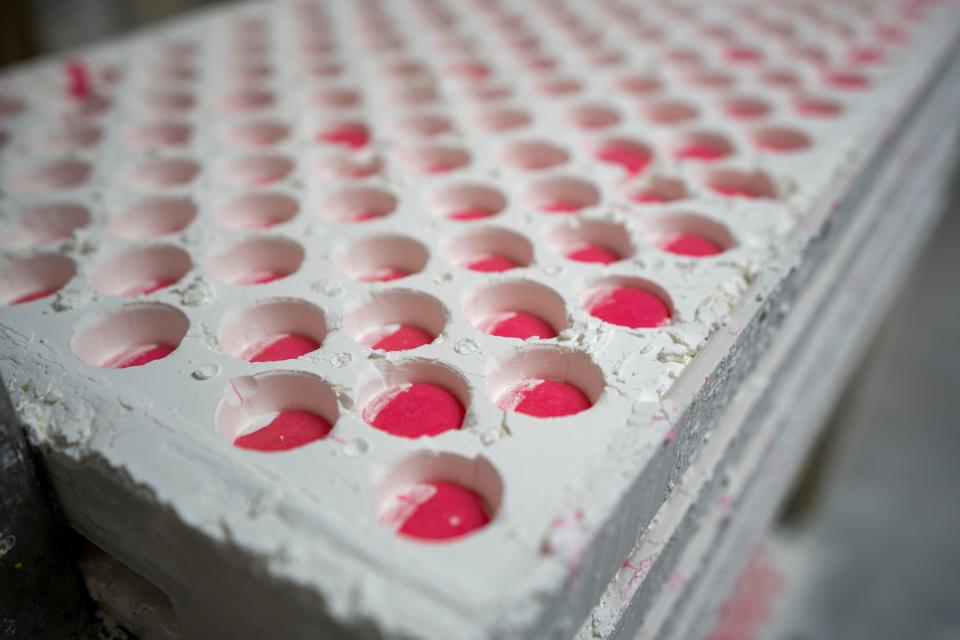
The Twin Bing — as well as its single relative, the Bing, which recently turned 100 years old, and the triple King Bing — are more mound that traditional bar, with each package containing the size-appropriate number of humps. Every individual Bing features a Barbie-pink center, a fondant-nougat mixture that announces itself by smacking tastebuds with CHERRY FLAVOR, covered by a thick concoction of chocolate and diced peanuts, “hash” in Twin Bing speak.
It's salty. It’s sweet. It's a little savory. It's creamy. It’s chewy. It’s crunchy. It’s simply outside the norms of time and space that something that looks, well, like little chunky, nutty brown piles can taste so gosh darn delicious.
It’s “Iowa umami,” says Darcy Maulsby, food historian and author of "A Culinary History of Iowa." “It delights the senses and excites the palate.”
Diehard Bing fandom is about both taste and tradition, if I could sum up nearly a century of frenzy in just a few words. And the Bing’s legacy is rooted in a sort of timelessness, somehow having the magical ability to transport a gourmand right back to a beloved memory while also rocketing a company to its next level — as it did once before.
But can this cult candy made in the reaches of Iowa really translate to a national audience? Is it ripe now, after 100 years, to take the Bing coast to coast?
Palmer Candy leaders think so — and they’ve got big plans.
The Bing ‘kept the lights on’: With company on rocky ground, a new CEO charts a sustainable future
Exactly who came up with the Bing’s mania-inducing peanut-chocolate-cherry combination and how is lost to Palmer’s 145-year-old history — a tenure so long the firm was recently named America’s oldest candy company continuously owned and operated by the same family, a point of great pride for Marty.
The most likely inventor was Bronson Palmer, the family member in charge in 1923, when, after World War I, interest in the newfangled idea of candy bars spiked, Marty says, quickly snaking through conveyor belts ferrying pretzels covered in vivid pink sprinkles. By the time autumn leaves start falling in the outside world, it’s already Valentine’s Day in the candy-making one.
Some of the most popular brands today — Snickers, Milky Way, M&Ms, Reese’s — were all developed in those heady post-war years. So like every other confectionary at the time, Palmer started developing dozens of bars, the old wrappers and trademark numbers for which Marty found in the boxes and boxes of memorabilia peppering his office. But out of the Crow Bar, the Goodynut, the Soo-preme and even the other original Bing flavors — maple, vanilla and pineapple — only the cherry Bing has lasted.
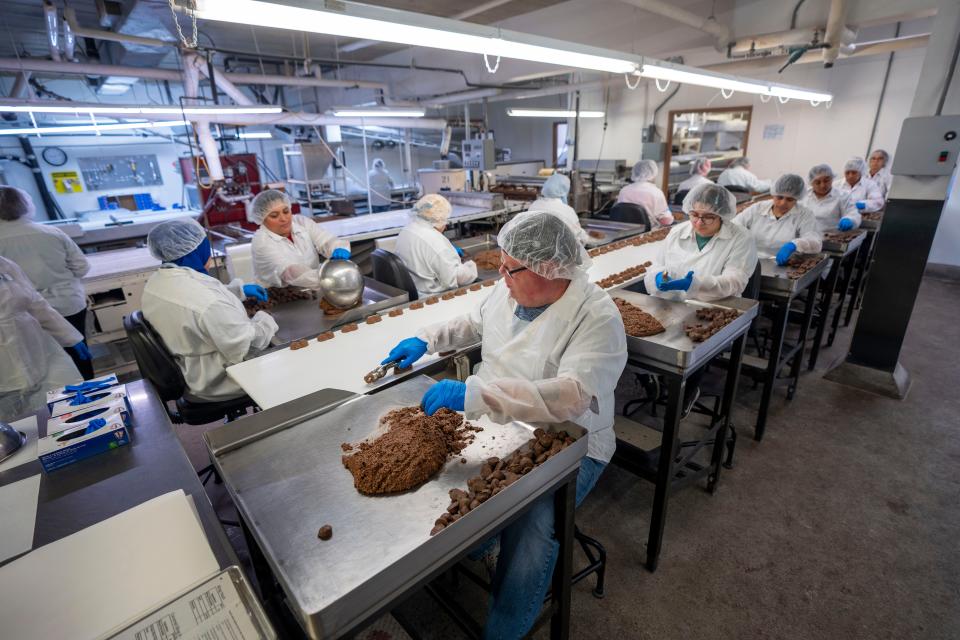
Marty stalls at the high stools where uniformed confectioners in clean white smocks shovel the chocolate-peanut hash into specially made ice cream scoopers. With the flick of a wrist, they thrust in the appropriate number of cherry centers and swiftly level off the bottoms before pushing the scooper’s release lever, liberating the Bings with a plop. Scoop. Thrust. Plop. Scoop. Thrust. Plop. Scoop. Thrust. Plop.
Bings are one of the few mass-market candy bars still made by hand, Marty says, and these confectioners will prepare 20,000 to 50,000 a day.
Marty, 66, who radiates energy like the staccato popping neon of a Las Vegas sign, had no plans to return to Sioux City or to the family business after college — which is incredibly hard to believe given how much he now loves the city, the company and chocolate itself.
And, honestly, I can’t stress how much he really loves chocolate.
Nor how much of a geek he is for the details of chocolate manufacturing. The company launched a Peanut Butter Bing — peanut butter center instead of cherry and crisped rice in the hash instead of peanuts — to much fanfare a while back. But Marty didn’t think the taste was right; the center was just off, he says.
“We killed it thinking we'd come back to it like a year later, and we're still working on it,” he says.
That was 17 years ago.
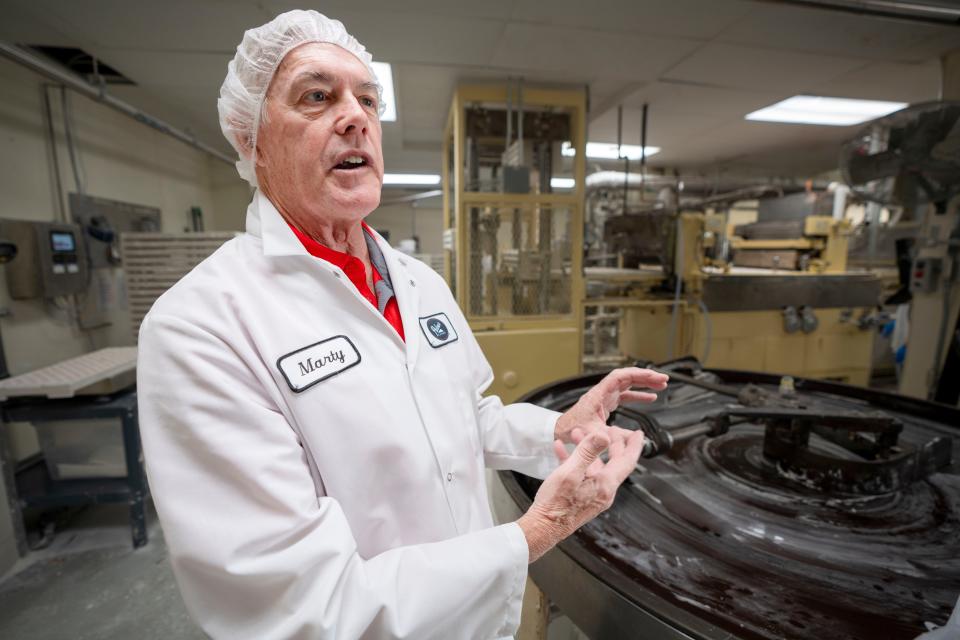
As a kid, Marty relished the few afternoons he ran around the factory floor, tasting fresh Bings right off the line, or the handful of times he convinced his dad to give him a box of Bings for the swim team. But after getting a degree from the University of Colorado in 1980, he had dreams of traveling the world — until the family called.
They needed help; back then there hadn’t been a lot of recent investment, and the business wasn’t healthy. At 23, Marty responded.
Relying on the executive team, Marty’s first objective was to save the company, “make it financially stable and sound,” he says, and then figure out the long-term path forward.
“We had some dynamite products, had some dynamite people, but we were really lacking in the infrastructure,” he says.
So the team spent the next few years investing in equipment. They didn’t have the money to buy new, so they’d go to auctions, retrofit old parts and implement them on the line, inventing and patching as they went. Air conditioning ductwork. Baling wire. Duct tape. Whatever it took.
The team embraced “failing cheaply,” Marty says. They’d try 10 new products or ideas on a small budget. Say eight failed and two succeeded, they’d further invest in those two and try another 10. Pretty soon, you have a suite of ideas that work, he says.
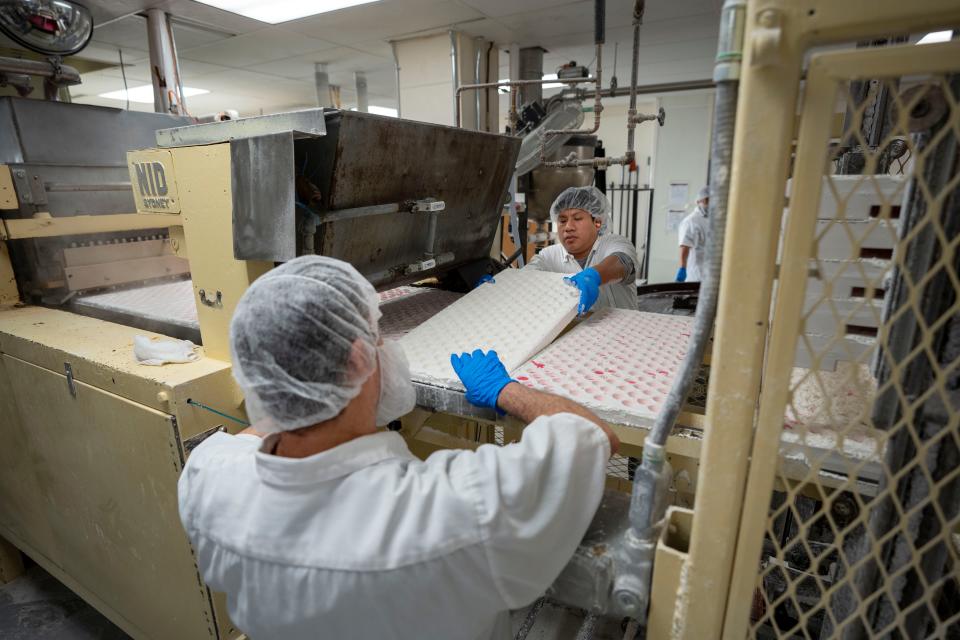
But their biggest gamble by far was getting out of wholesaling — delivering other people’s already packaged products on their trucks — and doubling down on manufacturing. The previous regime had built wholesaling into nearly half of the company’s business, but that growth reached a plateau.
Marty and the team saw exponential expansion in being able to use their new infrastructure to either become a packager for other companies, a “re-bagger” in industry speak, or to buy those companies’ candies in bulk, combine them with items they were already making — chocolates, coated pretzels, caramels, peanut brittle — and bag the mixes under Palmer Candy.
In the decades that followed, Palmer translated those initiatives into a major private label business, bagging candies and sweets under the brand names of some of the nation’s largest big box stores, groceries and gas stations.
Because they were willing to reimagine, Marty says, Palmer has grown from 30 employees his first year to more than 450 team members now, and from one factory to four, with an additional 25 acres to expand on the north side of Sioux City. And today, Palmer regularly outperforms the candy industry by double, Marty says.
“When I started, there were probably 300 candy companies our size in the nation. There's less than 30 now,” Marty says. “All of those either failed or they got bought up by somebody bigger or merged.”
Those companies weren’t willing to change, he says. But, of course, there was one particular candy Palmer wasn’t willing to change, either: The Bing.
“They kept the lights on,” Marty says of the Bing in those early years.
“It provided the foundation that let us alter the company and grow," he says. “The Twin Bing has always been there. It's a heartbeat.”
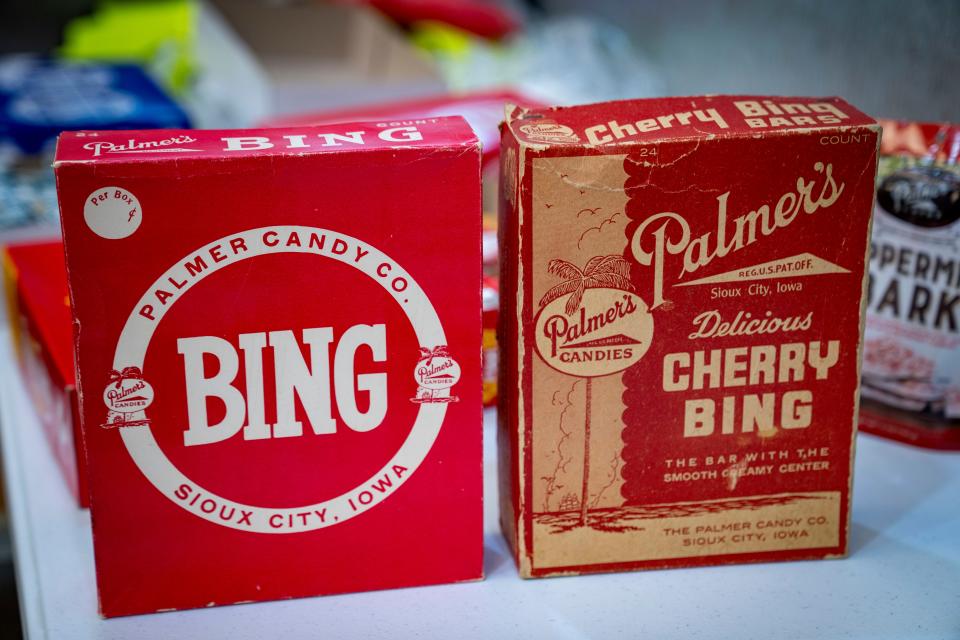
The future is Bing: How ‘new-stalgia’ will take Palmer into the next century
When interested parties call Marty with an offer to buy the business — and they do call — he quotes them what his projections say the company will be worth in 10 years.
He’s never gotten any takers.
“Why would I sell?” Marty says. “Because I know we've got a plan. We know where we're going to be in 10 years, and we can just do that, and then have this much more valuable resource.”
Marty has lofty goals for his family’s company; namely, to double in size over the next decade — just as, he hopes, the sixth generation is taking over the big office.
Continuing to find niches, as the company did with re-bagging, will be a large part of that business plan. One area he’s eyeing for growth is selling confections into grocery baking departments, either for use in their products or as higher-priced items outside the candy aisle — think peanut brittle and peppermint bark.
But the Bing, too, is integral to the company’s future, Marty says. Namely, getting them to more people, in more places, in more varieties.
After all, he adds, Reese’s famous cups used to be regional candy once.
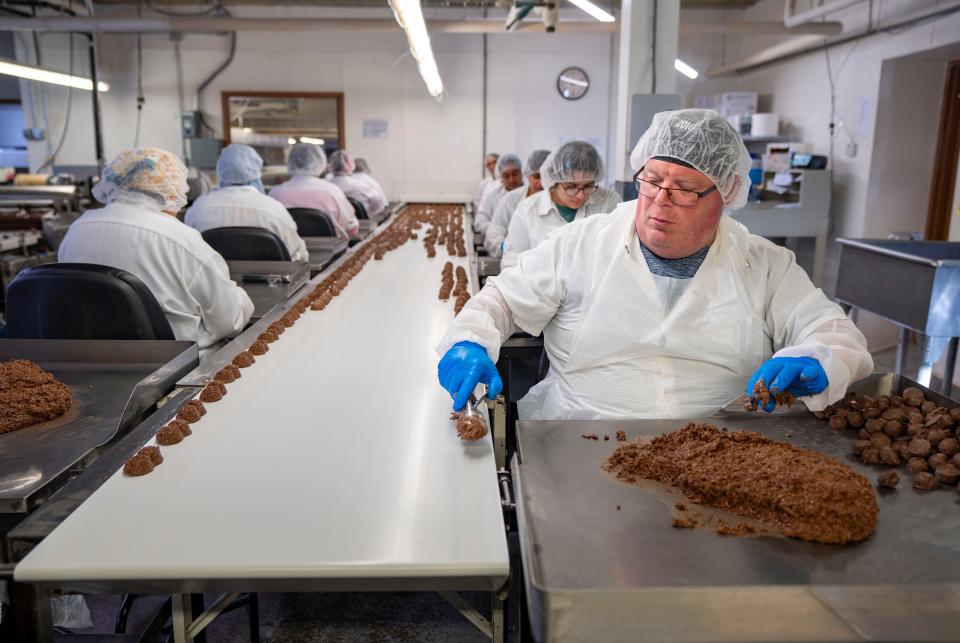
So Palmer is leaning into “new-stalgia,” a trendy industry concept where companies leverage their most well-established brand — the Bing for Palmer — to innovate new products and marketing campaigns.
Recently, the company created Bing-flavored ice cream with local dairy Stensland Family Farms; Bing coffee beans with Rosie Coffee Roasting Co.; and even a Bing stout with Fernson Brewing Co.
These partnerships have all been local to Siouxland, but they’ve proven the Bing’s unique “Iowa umami” combination of cherry, peanuts and chocolate “can play well in a variety of different culinary arenas,” says Maulsby, the food historian. And, more importantly, that consumers are mad not just for Bings, but for Bing-flavored items.
Marty and his team are also looking at other flavor combinations that use the framework of Bings but branch out in taste. The company already has a Caramel Bing, where the center is caramel and the peanuts are replaced with crispy rice, and a Smores Bing, which has a marshmallow center and a chocolate-graham hash.
“We think we can make some that’ll be more appealing to maybe different age groups,” he says.
And the company’s growing merchandise offerings — T-shirts, tumblers, onesies and magnets emblazoned with its vintage logo — follow the path of other companies who have successfully drawn in younger generations.
More: TikToker tries Twin Bing bars
Stretching in any of these ways, however, really starts with growing the Bing’s reach outside the confines of the western Plains. And because Marty and his team don’t have the $10 million advertising budget of a Hershey’s or a Mars to dump on a given city, they have to rely on word of mouth.
“Well, word of mouth and social media actually work now,” Marty says, hands bouncing in excitement. So one of their plans is to up their internet game and make the Bing go viral.
Bings sell, that they know, Marty says, as if placing a verbal period. “If we can get them available.”
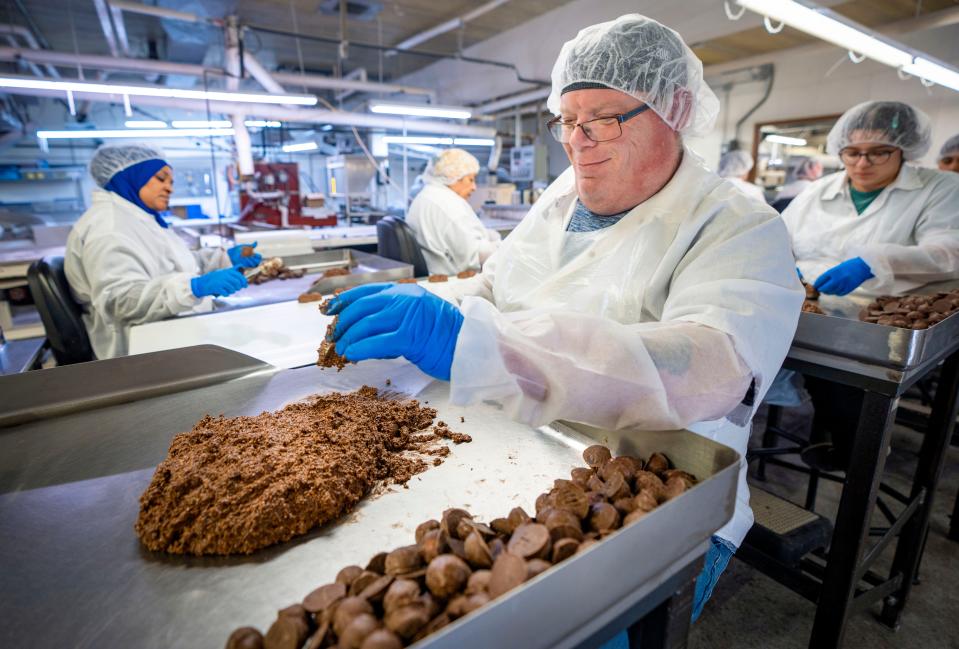
Why does the Bing have staying power? A timeless connection
So, has the Bing been majorly altered over the last century?
Excuse Marty’s snicker at the thought: Uhhhh, no. Listen, he’s not trying to become the New Coke of the candy world.
“If I changed the Bing, I’d be run out of town,” Marty says.
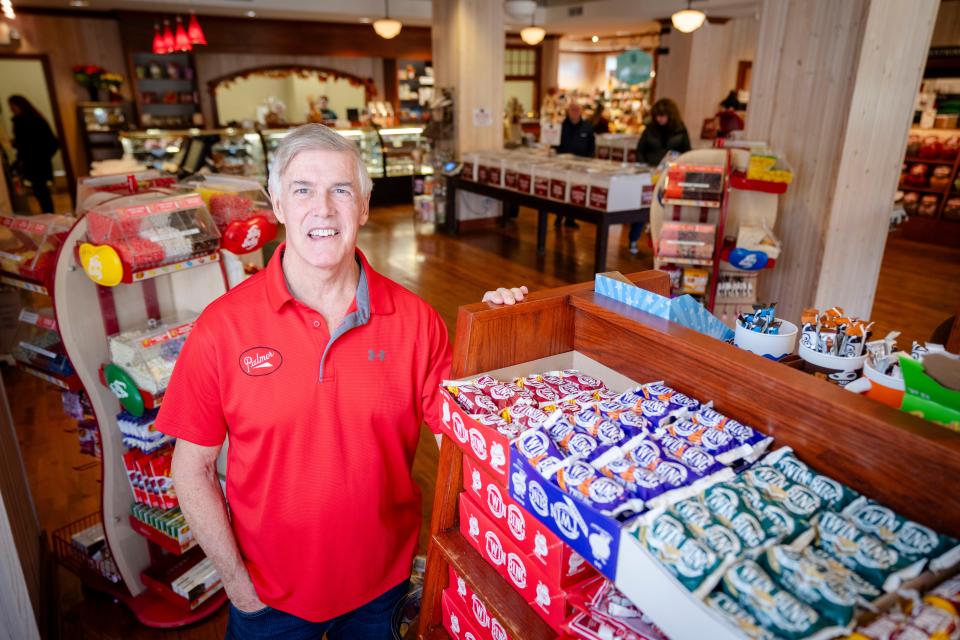
Through wars and diseases and economic upheavals, as culture shifted wildly, the Bing has remained untouched. Flavor the same as your childhood or your parents' childhood or your grandparents' childhood.
“When I taste that Bing, it still blows my head off. I still love it like it was my first bite, and that uniqueness is why I obsess over these,” says prolific Des Moines chef and Bing superfan George Formaro.
Each mound is like a cherry-flavored time-travel machine, he says. As soon as that hash hits Bing fans’ tastebuds, they’re transported back to the first time they had it, or the last time, or the best time, or the time with her, or with him, or them.
For Formaro, he’s right back to being a kid on Christmas morning, Twin Bings nestled in his stocking. One before breakfast and one for later.
“A product or a dish or a drink that doesn't change is a fantastic story,” Formaro says. “It lets us tell our stories about it, keep our memories of it alive, and in doing so, it lets us create new.”
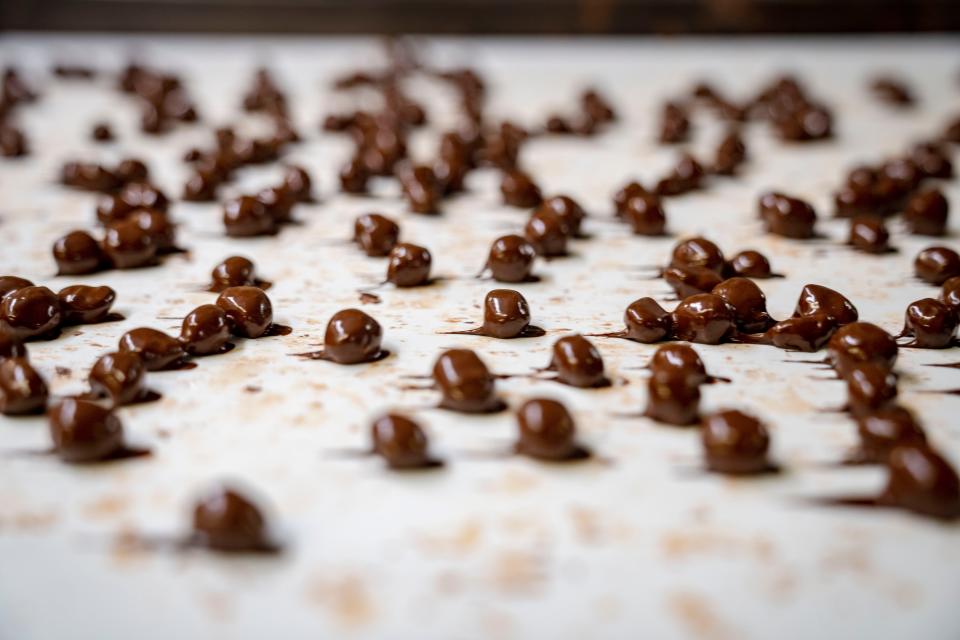
Connection has always been the Bing’s superpower, always been the engine behind the emails in Brenda Peters’ inbox, the memories she keeps. But the connection is not just about ties to the past — it’s about making bonds for the future, too.
So, now, Formaro hopes that when his grandchildren bite into a Bing, they’ll be transported right back to weekends at Papa’s house when they raced for his candy stash knowing there’s going to be at least a few Twin Bings squirreled away.
He cherishes the idea of them sharing that with their kids, and those kids with their own, and on and on in chocolaty cherry bliss.
Just as long as they make sure to always leave a Bing for him.
Courtney Crowder, the Register's Iowa Columnist, traverses the state's 99 counties telling Iowans' stories. Reach her at ccrowder@dmreg.com or 515-284-8360.
Share your Twin Bing stories
What are your Twin Bing memories? Share with us on social media or email Courtney at ccrowder@dmreg.com. Stories may be published in an upcoming Des Moines Register.
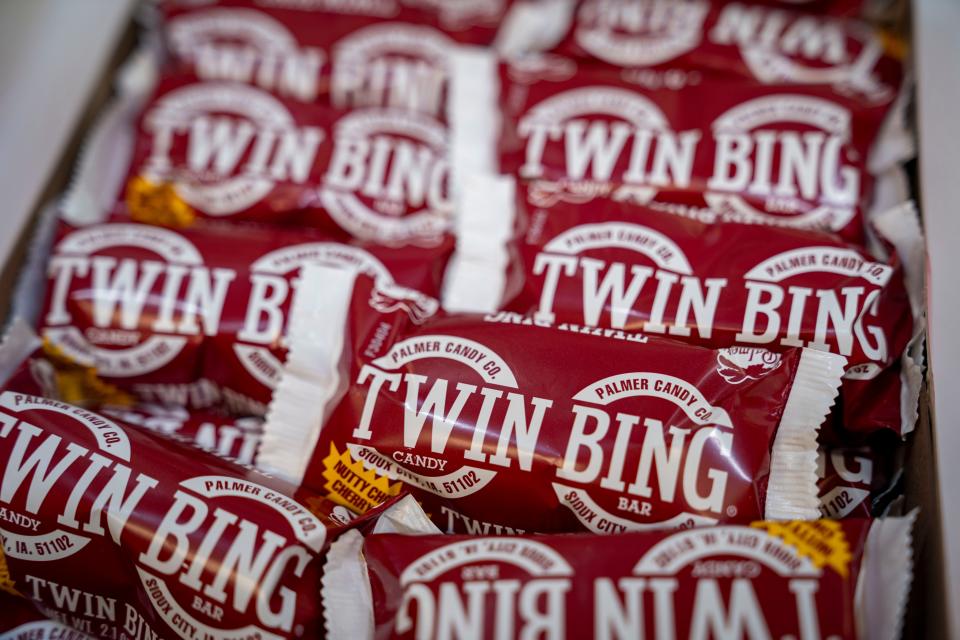
This article originally appeared on Des Moines Register: Twin Bing: The mania and fandom behind an Iowa treat at Palmer Candy

